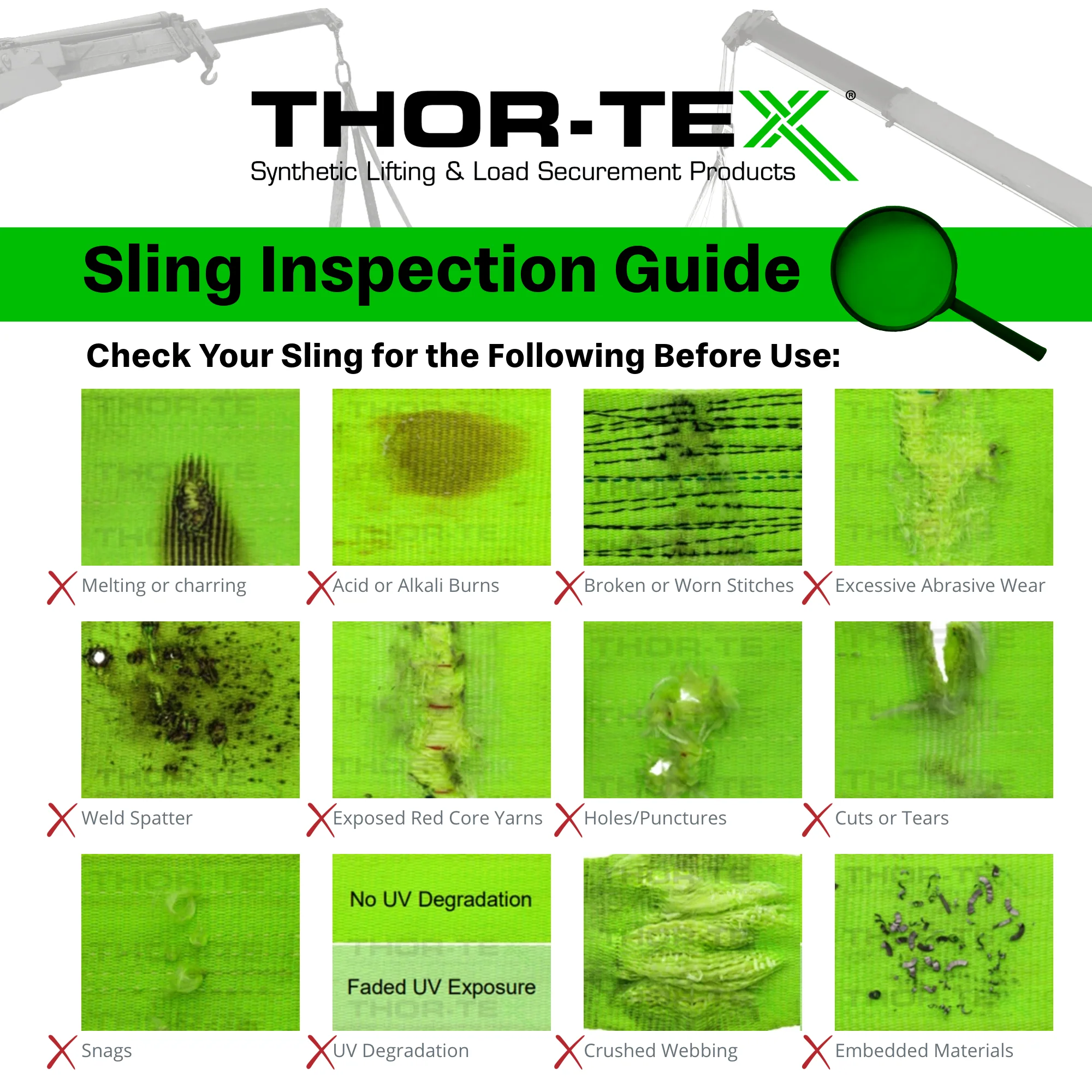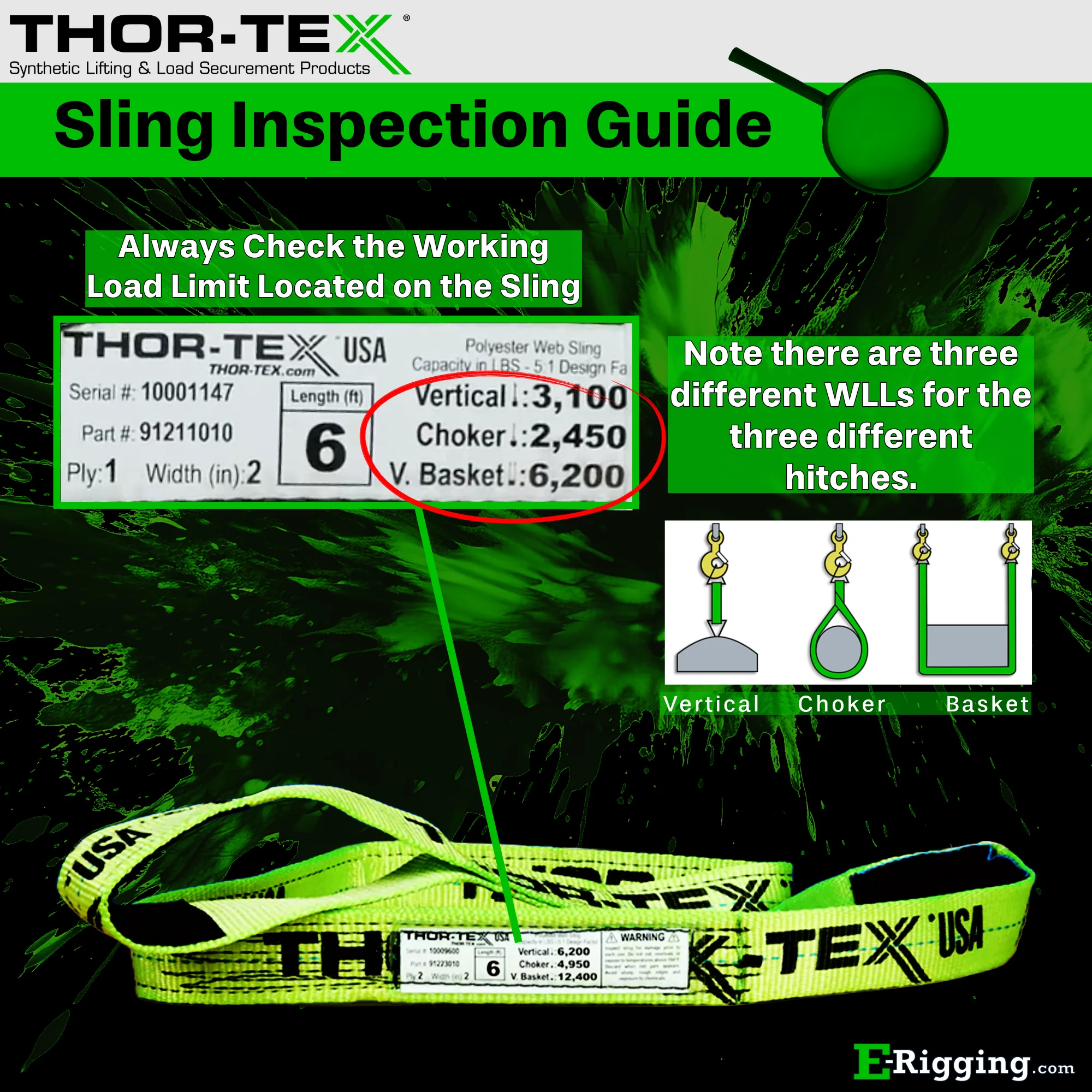How to Inspect and Maintain Synthetic Lifting Slings | E-Rigging Guide
Important Notice: The use of lifting equipment, including slings, involves multiple tools, variables, and components. Polyester web slings are just one part of the system. Before using polyester web slings, it's crucial to read and understand this bulletin. Failure to do so could lead to serious INJURY or even DEATH, due to sling failure or load loss.
Maintaining your synthetic lifting slings properly is key to ensuring safety and prolonging their life. Here's a thorough guide to help you keep your slings in excellent condition.
Inspection Guidelines
1. Visual Inspection:
Before every use, carefully examine the sling for any visible signs of damage. Look out for cuts, tears, or abrasions on the webbing. Check for broken stitches or signs of chemical damage, such as discoloration.

2. Feel for Damage:
Run your hands along the sling to detect any hidden issues. Stiffness might indicate chemical exposure or heat damage. Ensure there are no hard spots or areas where the material has thinned.
3. Hardware Check:
Inspect all hardware, like hooks and shackles, for wear, corrosion, or damage. Make sure all attachments are secure and working correctly.
4. Load Capacity:
Verify that the sling is still within its rated load capacity. If the tag showing the Working Load Limit (WLL) is missing or unreadable, take the sling out of service.
Maintenance Tips
1. Regular Cleaning:
Keep your slings clean by removing dirt, grease, and other contaminants. Use mild soap and water, avoiding harsh chemicals that can weaken fibers. Thoroughly rinse and let the sling dry completely before storage.
2. Proper Storage:
Store slings in a cool, dry area away from direct sunlight and chemicals. Hanging slings or placing them on racks helps prevent tangling and damage.
3. Avoid Sharp Edges:
When using synthetic slings, avoid dragging them over sharp edges. Use wear pads or edge protectors to reduce the risk of cuts and abrasions.
Protection from Sharp Edges: According to OSHA 1910.184(c)(7), slings must be padded or protected from sharp edges. This means that when using lifting slings with forklifts, there should be padding or protective measures between the forklift forks and the sling to prevent abrasion and tears.
4. Professional Inspections:
Schedule regular inspections by a qualified professional. This should happen at least annually or more often if the slings are used in harsh environments or for critical lifts.

When to Replace a Sling
Replace your sling if it shows any of the following signs:
- Cuts, tears, or burns in the webbing
- Broken wires or excessive wear in wire rope slings
- Bent, cracked, or damaged chain links
- Melting or weakening of synthetic fibers due to heat exposure
Proper inspection and maintenance of your synthetic lifting slings are vital to ensure safety and efficiency in your lifting operations. By following these guidelines, you can extend the life of your slings and prevent accidents.
For more detailed information on sling safety and best practices, visit our Web Sling Bulletin.
Is it time to replace a sling? Consider upgrading to THOR-TEX Slings.

New Product Fan,Industry Discharge Fan,Freezer Refrigerator Fan,Crown Freezer Refrigerator Fan
Crown Electronics CO., LTD , https://www.crownhaero.com